Features
ADIEU TO THE 'PEACE PENTAGON'
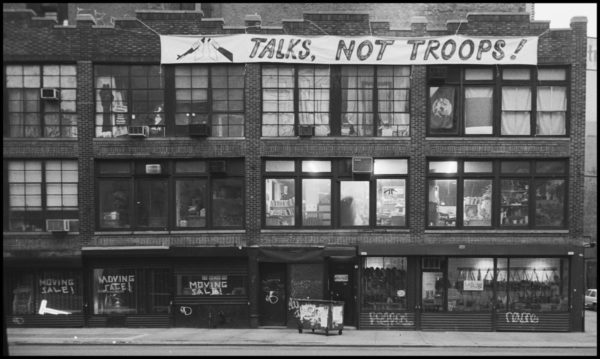
by Bill Weinberg, The Villager
The night of Thursday May 5 was a bittersweet one for me. For probably the last time in my life, I crossed the threshold of 339 Lafayette St., for a "Moving the Movement" farewell party. I was bidding adieu to the building that three generations of activists had affectionately called the "Peace Pentagon." The gathering was confined to one room of the three-story structure, with construction tape barring access to the other rooms, and the halls deserted. It was an eerie feeling.
The first time I entered the building at the corner of Lafayette and Bleecker, I was in my senior year of high school. It was 1980, Reagan's election was imminent, the Iran hostage crisis and Soviet invasion of Afghanistan dominated the headlines, and the big lurch to the right was in frightening progress. President Carter, who had been elected on a pledge to pardon Vietnam-era draft resisters, capitulated to the new bellicose zeitgeist by bringing back draft registration. I was in the first crop of 18-year-olds to have to register with the Selective Service System since 1973. This precipitated my first activist involvement—a student anti-draft group. Through this, I was inevitably drawn into the orbit of the War Resisters League—the venerable pacifist organization that grew out of anti-draft efforts in World War I, and was the anchor tenant at 339.
CHALLENGING THE NATION STATE IN SYRIA
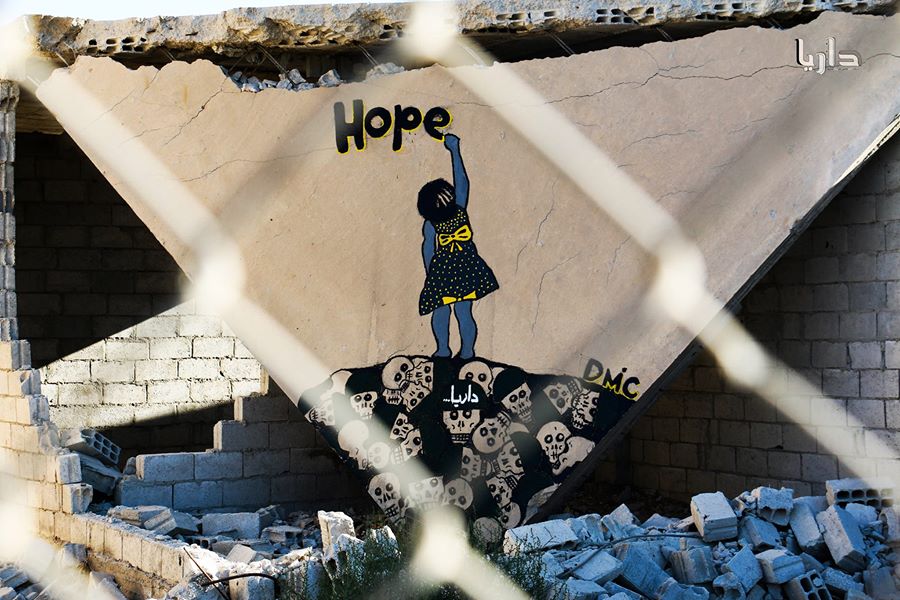
by Leila Al Shami, Fifth Estate
Syria's current borders were drawn up by imperial map-makers a hundred years ago in the midst of World War I as part of a secret accord between France and Britain to divide the Mideast spoils of the Turkish Ottoman Empire. As the colonial state gave way to the post-independence state, power was transferred from Western masters to local elites.
The three major discourses which grew out of the anti-colonial struggle—socialism, Arab nationalism, and Islamism—all fetishized the idea of a strong state as the basis of resistance to Western hegemony. In the case of Syria, it led to the emergence of an ultra-authoritarian regime where power is centralized around one man in Damascus, Bashar al-Assad, bolstered by the state bureaucracy, and security forces. But today, new ways of organizing have emerged which challenge centralized authority and the state framework.
During the course of the revolution against Assad that began in Syria in 2011, land was liberated to the extent that by 2013 the regime had lost control over some four-fifths of the country. As the state began to disintegrate, communities needed to build alternative structures to keep life functioning in the newly created autonomous zones.
A FEDERAL SYRIA
Kurdish Initiatives on the Rise
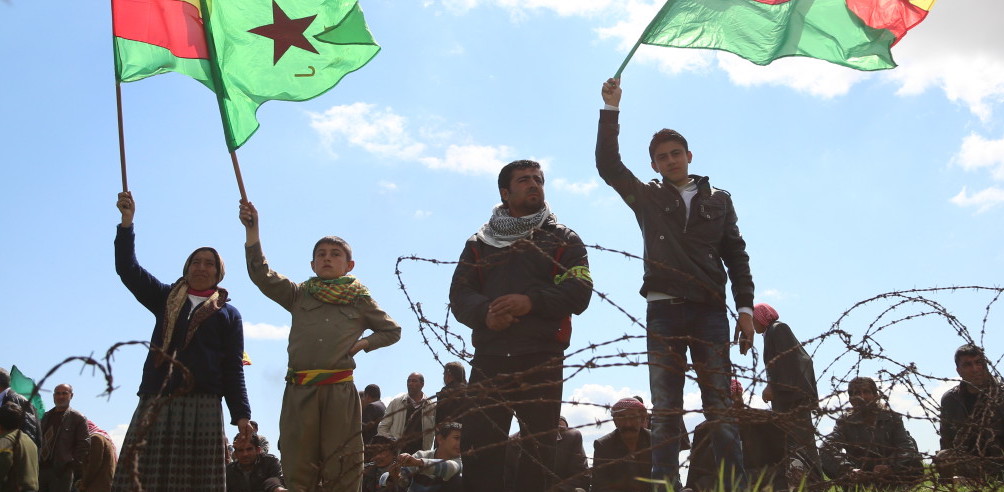
by Rene Wadlow, Toward Freedom
On March 17, 2016, the "federal democratic system of Rojava" (a Kurdish term for northern Syria) was proclaimed officially. Some 150 representatives of Kurdish, Arab, and Assyrian (largely Christian) groups met in the city of Rmellane in northeast Syria and voted in favor of the union of three "cantons" largely populated by Kurds—the cantons of Afrin, Kobani, and Jezireh.
The government as well as a major opposition coalition present in the Syria negotiations which have been going on in Geneva since the middle of March, the Syrian National Coalition, both stated their refusal of a federalist system which they saw as a first step to the breakup of Syria. The Syrian Foreign Ministry said that "Any such announcement has no legal value and will not have any legal, political, social or economic impact as long as it does not reflect the will of the entire Syrian people." There was no indication of how the "will of the entire Syrian people" was to be determined in the war-torn land.
While the Kurdish issues in Turkey have attracted international attention, and the largely autonomous Kurdish region of Iraq is a major player in Iraqi politics, the Kurds in Syria have been less discussed.
SYRIA'S INDEPENDENT MEDIA
A Bold Challenge to Extremism
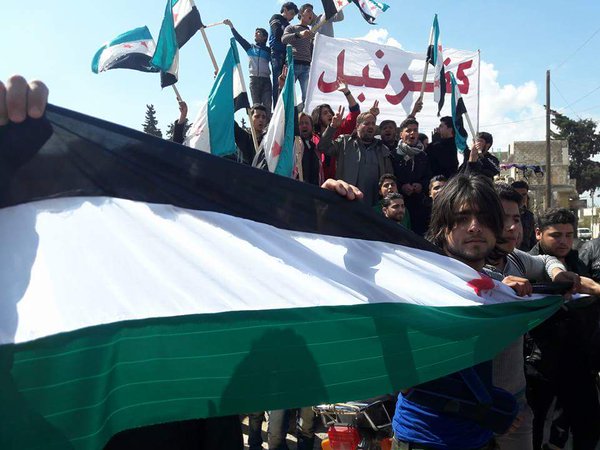
by Julia Taleb, Waging Nonviolence
On January 10, the Nusra Front, an al-Qaeda-affiliated terrorist group in Syria, stormed the headquarters of Radio Fresh in Kafranbel and arrested its director Raed al-Fares and journalist Hadi Abdullah. The flag of the Syrian revolution was thrown on the floor and al-Nusra members stepped on it and forced the station's members to do the same. They destroyed and confiscated equipment and books, burned the flag and—according to Ghalia al-Rahal, director of Mazaia, a women's center in Kafranbel—shouted, "We do not want any media in Kafranbel." They closed the station and placed a sign at the main door saying, "Confiscated by Jabhat al-Nusra, do not approach."
This raid came in response to a post on al-Fares' Facebook page, in which he said, "If our main concern is what's between a man's lips [cigarettes] and women's legs, and as long as we are herding people to prayers and flooding our schools with Sharia books, we will have a thousand years of death to come in Syria." Al-Nusra also claimed that songs broadcast on the station were against the Islamic ruling of Sharia.
Members of the radio station were held inside the office for almost two hours while al-Fares was taken by al-Nusra. After hours of negotiations with al-Nusra's leaders and Sharia judges, Abdullah provided guarantees that al-Fares would not post messages critical of Sharia on Facebook again, and he was released. Al-Nusra had to also admit that raiding the station was a mistake and promised to return all their equipment.
"As we were waiting for the negotiation, we were organizing for a massive protest that was planned to take off the next morning," al-Rahal said. "Al-Nusra knew that we would have not kept silent."
FAIR TRADE: THREAT TO GLOBAL POOR?
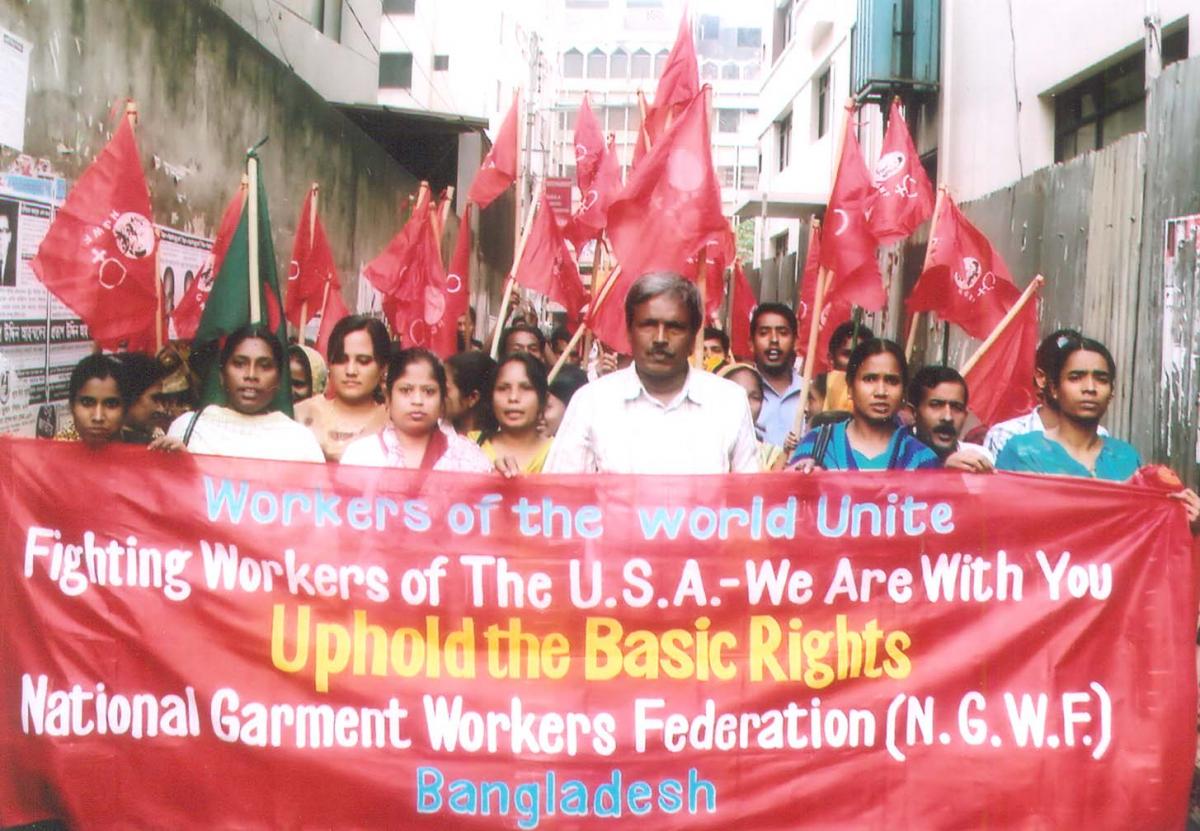
by David L. Wilson, MR Zine
On April 24, 2013, some 1,134 people died in the collapse of the Rana Plaza complex outside Dhaka, the capital of Bangladesh. The building housed factories where low-wage workers, largely women, stitched garments for the U.S. and European markets.
For several years before the disaster a number of U.S. opinion makers—notably New York Times columnists Thomas Friedman and Nicholas Kristof—had been arguing that assembly plants like those at Rana Plaza were crucial to the development of economies in the Global South and therefore a boon to the world's most impoverished. The media's efforts to promote sweatshops suddenly slowed down after the collapse in Bangladesh, but they seem to be reviving now, just as we approach the third anniversary of the disaster.
The occasion for the new pro-sweatshop campaign is Democratic presidential candidate Bernie Sanders' opposition to trade pacts like the North American Free Trade Agreement (NAFTA) and the Trans-Pacific Partnership (TPP). Senator Sanders has made criticism of the trade deals a key part of his bid for the Democratic nomination.
THE 'FREE TRADE' ASSAULT ON CLEAN WATER
Mining Companies Sue Colombia for 'Right' to Pollute
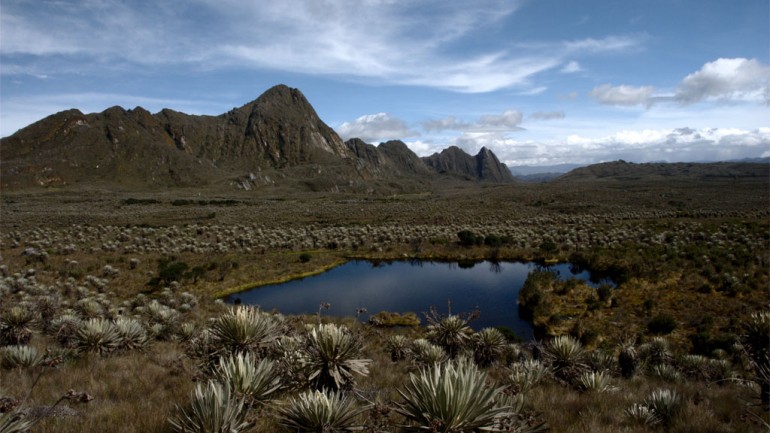
by Pete Dolack, Systemic Disorder
Yet another standoff between clean drinking water and mining profits has taken shape in Colombia, where two corporations insist their right to pollute trumps human health and the environment. As is customary in these cases, it is clean water that is the underdog here.
Two million people are dependent on water from a high-altitude wetland, which is also a refuge for endangered species, that a Canadian mining company, Eco Oro Minerals Corporation, wants to use for a gold mine. The wetlands, the Santurbán páramo in the Andes, has been declared off-limits for mining by Colombia's highest court due to the area’s environmental sensitivity. Eco Oro is suing the Colombian government because of this under the Canada-Colombia Free Trade Agreement.
The dispute will likely be heard by a secret tribunal that is an arm of the World Bank, even though the World Bank has provided investment capital for Eco Oro to develop the mine.
THE FIREWALL CAFE CONTROVERSY
Chinese State Censorship Reaches Manhattan's Lower East Side

by Bill Weinberg, The Villager
Manhattan-based artist Joyce Yu-Jean Lee never guessed she was in for a bit of international intrigue and even global headlines when she launched a show and accompanying discussion panels in February at a couple of alternative venues on the Lower East Side.
The installation, which lasted a month, was a pop-up Internet cafe dubbed "Firewall." This is a reference to the "Great Firewall of China" (officially the "Golden Shield") that filters the Internet in the People's Republic.
At Firewall Cafe, visitors got to input search terms of their choice into computers attached to split-screen monitors set up to display simultaneously the results from Google and Baidu—the state-approved Chinese alternative, operating from within the Great Firewall. The installation was hosted by a gallery with the appropriate name of Chinatown Soup. (Although it is actually on lower Orchard St., just where Chinatown is now starting to expand into the old Lower East Side).
DRILLING TOWARD DISASTER
Ecuador's Aggressive Amazonian Oil Push
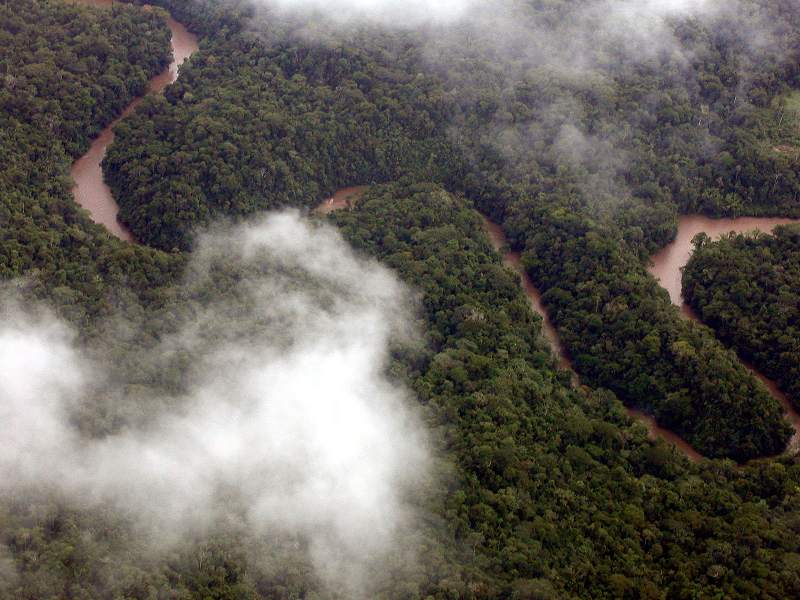
by Kevin Koenig, Amazon Watch
Last week, the Ecuadorian government announced that it had begun constructing the first of a planned 276 wells, ten drilling platforms, and multiple related pipelines and production facilities in the ITT (Ishpingo-Tambococha-Tiputini) oil field, known as Block 43, which overlaps Yasuní National Park in Ecuador's Amazon rainforest. Coupled with the recent signing of two new oil concessions on the southern border of Yasuní and plans to launch another oil lease auction for additional blocks in the country's southern Amazon in late 2016, the slated drilling frenzy is part of a larger, aggressive move for new oil exploration as the country faces daunting oil-backed loan payments to China, its largest creditor.
Yasuní National Park is widely considered one of the most biodiverse places on the planet. It has more species per hectare of trees, shrubs, insects, birds, amphibians, and mammals than anywhere else in the world. It was designated a UNESCO Biosphere Reserve in 1989, and it is home to the Tagaeri-Taromenane, Ecuador's last indigenous people living in voluntary isolation.
The controversial drilling plans were met with protest at the Quito headquarters of state-run Petroamazonas, the company charged with developing the field. Ecuador averaged a spill per week between 2000 and 2010, which doesn't bode well for drilling in a national park.















Recent Updates
2 days 9 hours ago
3 days 12 hours ago
3 days 13 hours ago
4 days 2 hours ago
4 days 2 hours ago
4 days 5 hours ago
4 days 5 hours ago
4 days 5 hours ago
1 week 4 hours ago
1 week 3 days ago